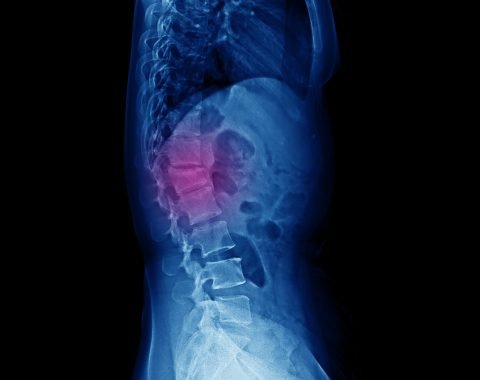 Kyphoplasty
Kyphoplasty
Kyphoplasty is a procedure used to treat vertebral body compression fractures, which are small breaks in the thick mass of bone that makes up the front part of your spinal column (the vertebral body). Vertebral body fractures lead to the collapse or compression of a vertebra, causing your spine to shorten and curve forward. This can result in pain and a kyphotic (hunched over) deformity.
Frequently Asked Questions
Kyphoplasty is generally reserved for people with moderate to severe back pain caused by osteoporotic or pathologic vertebral compression fractures. Candidates for these procedures often have a reduced ability to move and function because of the fractures.
To be a candidate for a kyphoplasty, your pain must be related to the vertebral fracture, and must not be due to other problems, such as disk herniation, arthritis, or stenosis (narrowing). Imaging tests — such as spinal x-rays, bone scans and computed tomography (CT) or magnetic resonance imaging (MRI) scans — might be ordered to confirm the presence of a vertebral fracture. If you have osteoporosis, your healthcare provider may order a dual energy x-ray absorptiometry (DXA) scan.
During the kyphoplasty procedure, you’ll lie on your stomach. While under sedation your healthcare provider will insert a hollow needle, called a trocar, through your skin and into the vertebra. X-ray is used to guide the trocar into the proper position.
Once the trocar is in place, an inflatable balloon-like device is inserted into the vertebra through the trocar. During a kyphoplasty, as the balloon is inflated, to help the collapsed vertebra regain its normal shape. The cavity that is formed is then filled with bone cement.
Kyphoplasty is an outpatient procedure that is considered minimally invasive and is most often performed using intravenous or local anesthesia, depending on the healthcare provider, the facility, and your needs.
Kyphoplasty usually provides pain relief and improved mobility (movement) within 48 hours of the procedure. In some cases, however, you may feel pain relief immediately.
Kyphoplasty is very low-risk. There’s a slight chance you could get an infection, bleeding, increased back pain, or numbness and tingling. If you have osteoporosis, there is a risk of developing additional fractures at other vertebral bodies in your spine. To avoid this risk, your healthcare provider will want to ensure that you are on medications to improve your bone quality.

 Kyphoplasty
Kyphoplasty